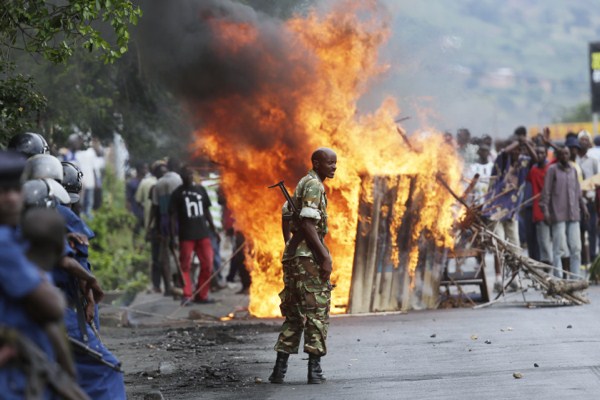When Burundi’s ruling party, known the CNDD-FDD, chose President Pierre Nkurunziza on April 25 to run for a third five-year term in a presidential election scheduled for June, his supporters did their best to mark the occasion with festivity. In the capital, Bujumbura, hundreds of youths in the party’s red, white and green t-shirts jogged alongside the presidential motorcade, chanting the party’s theme song. Many had legitimate cause to celebrate. Under Nkurunziza, a former rebel leader elected president in 2005, Burundi had emerged from a 10-year civil war to become what many hailed as an international model of peace-building. Despite the regime’s continued use of targeted killings, the country had enjoyed a decade of hard-earned stability. Tensions between Hutus and Tutsis, a critical driver of past conflict, had significantly subsided.
As had long been predicted, however, the situation soon turned violent. Since April 26, the day following Nkurunziza’s nomination, at least 13 people have died and as many as 600 have been arrested in protests against a possible third term, which continue on a daily basis in Bujumbura. Those demonstrating argue Nkurunziza’s bid to stay in power is a violation of Burundi’s 2005 Constitution, as well as the 2000 Arusha peace agreement, on which the Constitution is largely based. On Tuesday, more protests erupted after Burundi’s Constitutional Court announced that it had approved the legality of the third term, based on the fact that Nkurunziza was first elected by the National Assembly, rather than by popular vote.
The day before, however, the court’s vice president, Sylvere Nimpagaritse, had dramatically fled the country, telling journalists its judges had faced “enormous pressure and even death threats” to pave the way for Nkurunziza’s candidacy. He joins at least 26,000 Burundians that have left for neighboring Rwanda and the Democratic Republic of Congo since the end of March, when the imbonerakure, the armed youth wing of the CNDD-FDD that effectively serves as a party militia, began to threaten opponents of the president. More than a week into the Bujumbura protests, there appears no end in sight to the unrest.

